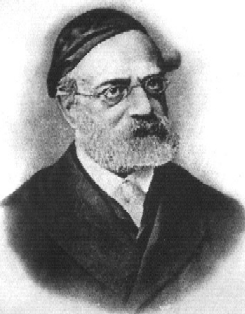In all houses of G-d, a ner tomid illuminates the aron hakodesh, in which our sacred Sifrei Torah rest. It proclaims the silent yet eloquent admonition that it must be G-d Who leads us with His sacred Will through life, that it must be G-d Who illuminates our path of life.
The ner tomid commemorates the menorah in the Divine Sanctuary, of which it says that “its light may shine forever upwards” (Shemos 27:20). Similarly, the ner tomid in our shuls looks to men who consider it their life-convocation to guide and lead their people with this light on its path through life.
Such bearers of light were granted to our people since Moshe Rabbeinu, throughout the millennia of its history. They were men sent by G-d who fought against the night that threatened to engulf wide segments of our people; men who, with Divine assistance, illuminated with the Divine light of Torah “the dark streets” (Medrash to Tehillim 50:23). With the full dedication of their lives to the Divine ner tomid, these great leaders have secured for themselves their own “ner tomid,” the impact of their personalities for all time to come.
Why has our kehillah dedicated a ner tomid to this great bearer of light, to this prince of Torah among the many great of our people?
A brief analysis of his interpretation of the ner tomid of the menorah in the Divine Sanctuary will supply the answer to this question.
The menorah, with its seven flames of light, teaches us how to shape our spiritual and intellectual existence, symbolized by the light, if it is to unfold on the soil of G-d’s Sanctuary. The main part of the menorah in the Heichal consisted of a center shaft upon whose summit the light burned in a westerly direction, turning towards the Kodesh Hakodoshim, which contained the Aron with Hashem’s Torah. From this center shaft emerged side arms to the right and left, which initially branched outward but then strove upward and, on the summit, turned their light from the right and the left towards the light of the center shaft. What is the meaning of this arrangement?
Man’s spirit manifests itself as the penetrating intellect and as the will that leads to moral action. The Torah demands that our spirit turn, above all, towards the Aron of the Torah; that our spirit recognize Hashem from His Torah; that our spirit, with its will, dedicate itself towards the service of Hashem. Thus, our perception must be, above all, knowledge and recognition of G-d. Our will leading to moral action must be, above all, service to G-d. To such Divine recognition and to such Divine service does the light of the summit of the center shaft call, a light that is turned towards the Aron Ha’eidus.
As the seventh day of creation bestows, with its G-d-proclaimed Shabbos, the mark of Divine creation upon the six days of creation of the world of nature, so the center shaft of the menorah sends out six arms towards the right and left, which appear to lead away from the center stem but actually turn their summit light towards the light in the center. The Torah expects that we turn our spirit towards the world and its multitude of facets, recognize and perceive them and conquer them. But these six arms with their flames of light emerge from the center shaft and are rooted in it: Reishis chochmah yiras Hashem, all knowledge of the universe, all study and research, must be rooted in the recognition and knowledge of G-d; it must be borne and imbued by it. Truth is that which stands up before the ruling Throne of Torah. Our will may only dare to conquer the realities of life if all our strivings are dedicated to the service of G-d. If our knowledge and perception of the world emanate from G-d’s Torah, then all six lights will send their rays towards the center light. Then, every newly-gained knowledge of the world will enrich our knowledge and recognition of G-d. Every law of nature that reveals itself to our probing mind will proclaim ever more triumphantly G-d’s Omnipotence. All so-called “secular” knowledge subordinates itself as auxiliary science to our true science of life, the science of Torah. If our worldly endeavors are permeated by the striving to dedicate, in servitude, all that we achieve to G-d and His sacred Will, then the six lights of the menorah will again send their rays towards the middle light and all we strive for and achieve on earth will be Divinely-hallowed service of life.
To Rav Hirsch, this was the essence of the demand of Divine Judaism. With this Torah Im Derech Eretz, in the true sense of the word, he led the heroic fight against the powers of tragic estrangement, and, with G-d’s menorah in his hand, he charted for the sons and daughters of his time the path of salvation illuminated by the Divine light – and again in his days the words of the novi were fulfilled: “The people who walked in darkness lived to see the great light” (Yeshayahu 9:1).
The battle is not yet concluded. Neither in this country nor in the Holy Land. More than ever, Rav Hirsch must be our leader. Our kehillah owes its development and its fame to his guidance. In ever growing numbers, our people drink from the inexhaustible source of his Torah wisdom. Our kehillah dedicates its ner tomid to him.
Of the course that he charted for us, it states in Mishlei (4:18), “The path of life of the tzaddikim is like the brilliantly shining light – burning ever brighter unto the day destined long before.” To this bright dawn of our G-d-willed future his life was dedicated. Thus, for this great person there comes true the word of wisdom (Brachos 18a), “Tzaddikim live on even when they are no longer with us on earth.”








